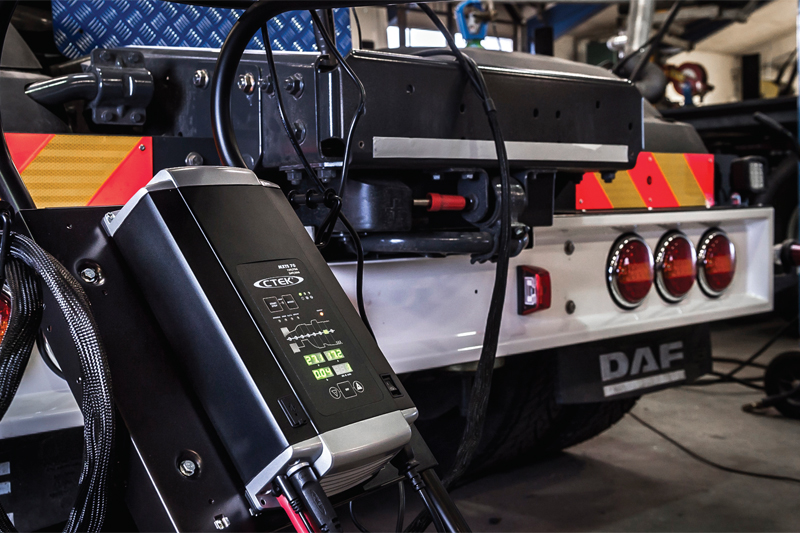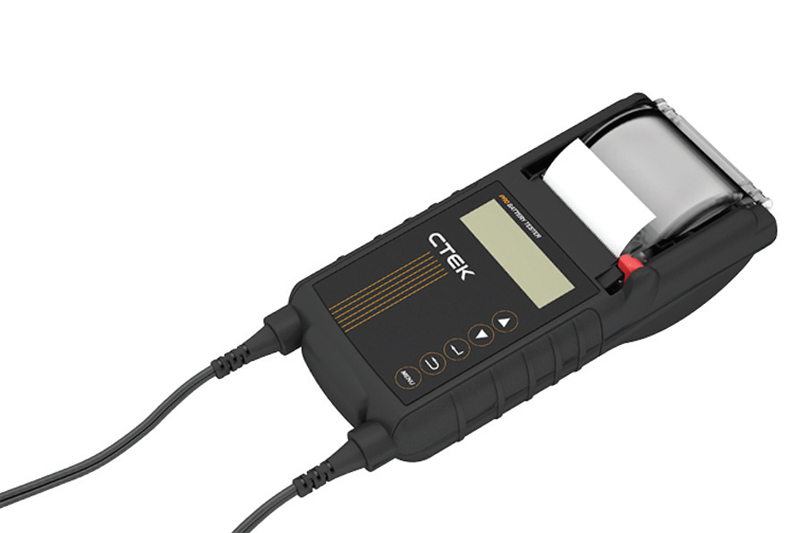
By making sure that a vehicle battery is tested when it first enters the workshop, and then is supported during any diagnostic procedures, technicians can avoid frustrating and misleading ‘ghost faults’ and reduce vehicle service and repair times. Tony Zeal from CTEK explains.
What exactly is a ghost fault? A ghost fault or ghost code is, in short, a fault that your diagnostic tool detects for one component, that has actually arisen from another – clear as mud, right? Here’s an example:
When a vehicle arrives for a service or to investigate a potential fault, the technician immediately connects a diagnostic tool to identify potential fault or error codes. When a vehicle arrives for a service or to investigate a potential fault, the technician immediately connects a diagnostic tool to identify potential fault or error codes. As part of this procedure, the memory on the vehicle Electronic Control Units (ECUs) is scanned to see if there are any issues to address. Or, in the case of a vehicle service, the technician needs to reset the service indicator to tell the vehicle that is has been in for a service.
Whilst this procedure is being undertaken, it is vital that the voltage across the vehicle system is correct. Crucially, it’s not a one size fits all approach either – requirements vary from manufacturer to manufacturer and, indeed, from model to model – it’s good practice to always check manufacturer recommendations so you don’t run into problems further down the line.

If this diagnostic procedure is undertaken when the battery has low voltage, and it isn’t supported, an error code or fault will be reported by the diagnostic tool. This is because, in the quest to protect against the battery failing, the vehicle Canbus system (the main communication channel between all vehicle control modules) will start to shut down all the systems it doesn’t need, such as the sound system, navigation, air conditioning, heaters etc.
Error codes may be reported for nonfunctioning systems and, if the technician doesn’t know that low battery voltage is the cause of the fault, they will start looking for, and trying to repair, a fault that is not really there – hence the expression ‘ghost fault’. This will remain a fault until the technician has taken care of the low voltage issue.
To protect against this, I would recommend two important steps as soon as the vehicle enters the workshop:
- Battery test – use something like the PRO Battery Tester from CTEK to help identify if the battery voltage is low. This is a 12V tester so, when working with a 24V system, make sure that each battery is tested separately
- Battery support unit – hook the vehicle up to a battery support unit in supply mode before undertaking any diagnostic work. Many battery support units, such as the CTEK MXTS 70/50, enable the technician to specify the required voltage so that potentially time consuming ‘ghost faults’ are not reported
CTEK knows that as many as one in three commercial vehicles entering a workshop have a battery in need of attention. By that, it means the battery is either undercharged or needs replacing – so it’s quite likely the battery will need support. Using a smart battery charger and support unit, like the CTEK MXTS 40 or MXTS 70/50, means that, as well as supporting the battery, it will charge it too – protecting against battery voltage dropping even lower than it was when it arrived in the workshop.
The MXTS 40 from CTEK is a battery charger and battery support unit that provides a stable voltage and up to 40A (12V mode) and 20A (24V mode) of fully regulated power to prevent loss of charge and damage to the battery, so it’s ideal for a wide range of commercial vehicles with average power consumption.

If even more power is required, the MXTS 70 provides up to a 70A of battery support (35A) in 24V. This unit gives the ability to cover all vehicles, including high specification vehicles with large flash programming demands. So, testing and supporting the battery during vehicle diagnostic and service work will give you the confidence that you won’t get ‘ghost fault’ reports that can unnecessarily waste time and resources.
Did you know?
Did you know that low battery voltage can cause ghost failures too? The vehicles Canbus system (the main communication channel between all the control modules) will start to shut down all the systems it doesn´t need if battery voltage is low. That’s because the Canbus system’s main priority is to ensure the engine keeps running at all costs. So, just like it does when a diagnostic procedure is undertaken, it will start to shut down those comfort modules like the radio, heaters, electric windows, air conditioning etc. So, if a driver is reporting that the air conditioning has stopped working, test the battery first – it could save you hours of unnecessary diagnostic and investigative work.








